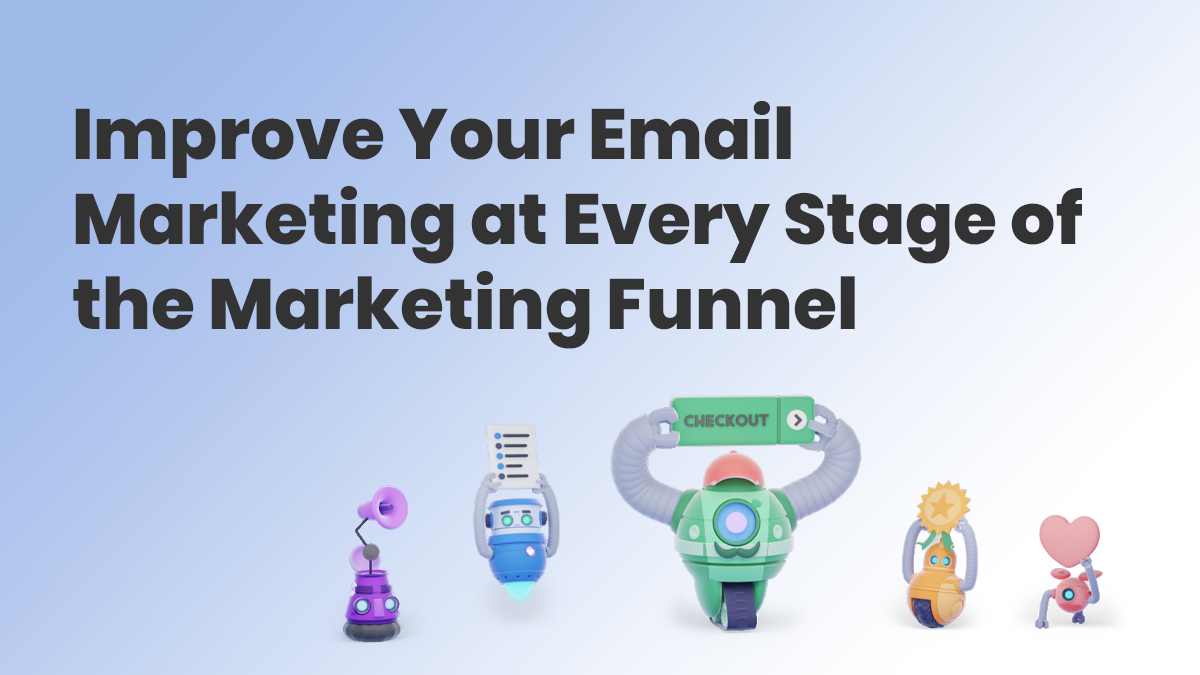
You could spend hours designing and writing a compelling email series that explains the amazing benefits of your product.
But if you don’t have a start-to-finish plan for connecting with your subscribers at every stage of their customer journey, you’re wasting your time.
Thankfully, there’s a marketing tool that can help you figure out how to communicate with your prospects and customers whether they’ve just joined your list, or they’ve been long-time customers.
It’s called the marketing funnel.
What is the Marketing Funnel?
The marketing funnel is a tool that helps you visualize the customer journey, or the path a prospect takes as they become familiar with your company, from introduction to conversion (and hopefully beyond).
Your marketing funnel should include the following 5 stages: awareness, consideration, conversion, loyalty, and advocacy.
The Old-School Marketing Funnel
You might be familiar with the cone-shaped marketing funnel. This old-school version of the marketing funnel required you to continually fill the top of the funnel with as many people as possible since only a few people traveled all the way through to advocacy.
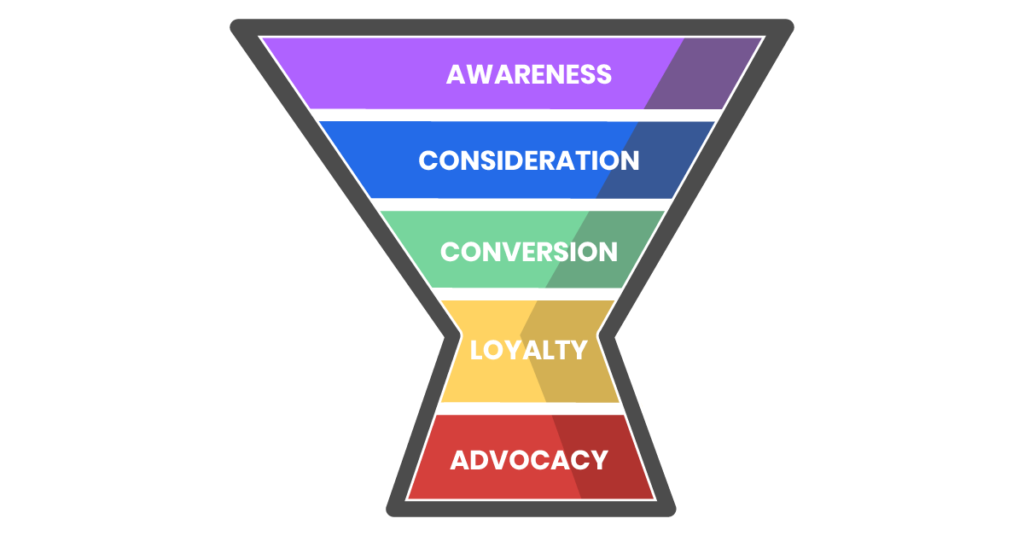
But it's time to throw that old-school marketing funnel out the window.
The problem with this version of the marketing funnel is that it tells you marketing efforts end at the point of purchase. After a person becomes a paying customer, your job is done.
But that’s not an effective strategy to grow your business.
Instead, we recommend you follow a marketing funnel that looks more like a bow tie that’s wide on the left, narrow in the middle, and wide on the right.
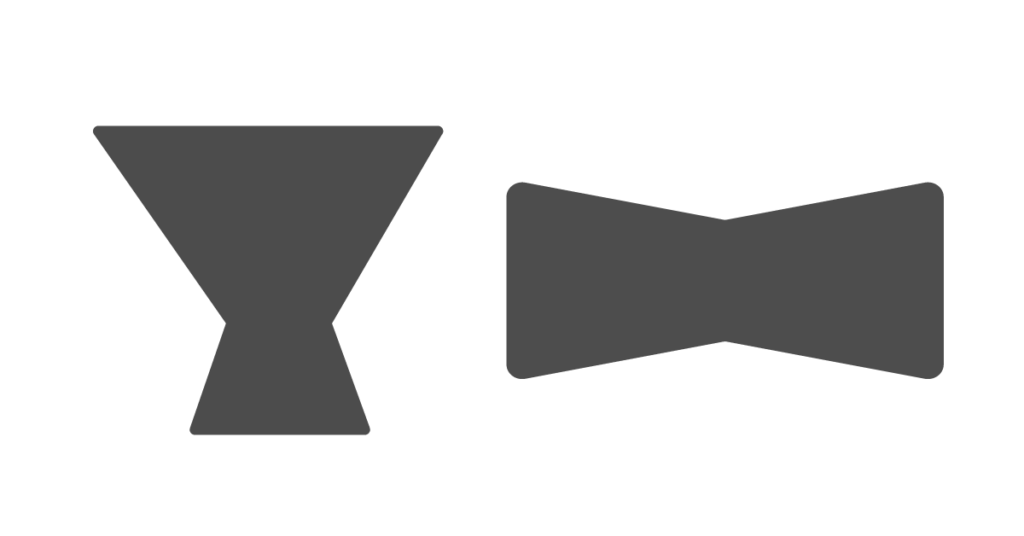
The New Marketing Funnel
Your relationship with your customer shouldn’t end at the bottom of the cone-shaped marketing funnel. Instead, focus on customer retention just as much as you focus on lead generation.
Why? Because happy customers are more likely to share great brand experiences with their family and friends. These loyal customers become advocates for your brand and they have the power to drive more leads for you.
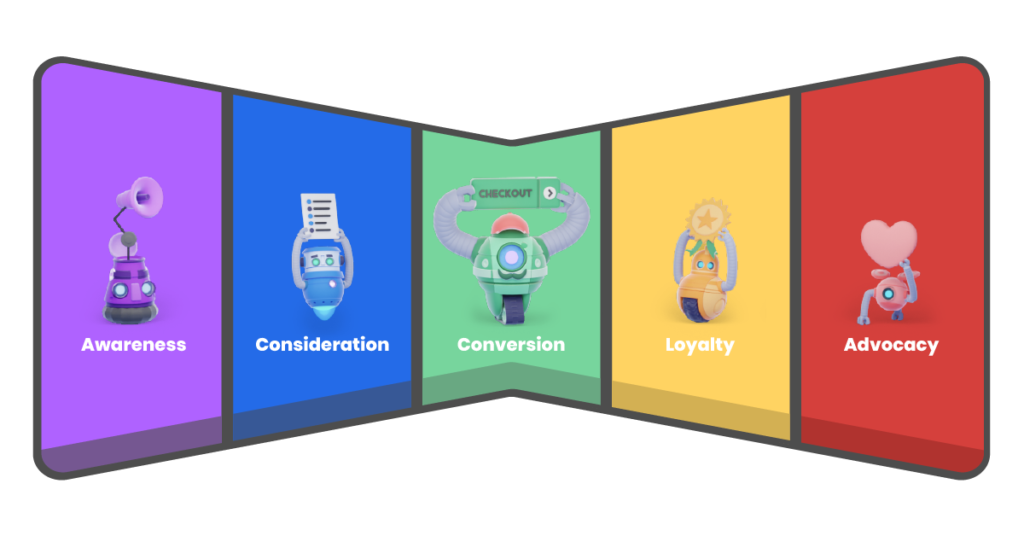
Marketing to customers after they buy from you is just as important as marketing to prospects before they buy from you.
Need proof? The numbers speak for themselves: 84% of consumers will take action based on recommendations from people they know.
And there’s an extraordinary upside to emphasizing customer retention in your marketing funnel: more money in your pocket. You may have heard of the Pareto Principle in marketing, which says that 80% of your profits come from just 20% of your customers.
So if you’re not marketing to your customers, you’re losing out on huge profits.
Let this be your wakeup call. This is your opportunity to create a deeper relationship between you and your customer. Get feedback from them, and apply it to content across all the marketing funnel stages.
With a tool like email automation, it’s easier than ever before to move people through your funnel toward advocacy.
Automation features allow you to give each subscriber the content, information, or products they need when they need it most. It personalizes their experience at all areas of the funnel.
And once it’s set up, you never have to lift a finger! You’ve effectively set up an engine that generates passive income to fuel your passion.
In this post, we’ll show you how to build marketing funnels with email.
5 Strategies to Take Your Subscribers Through the Marketing Funnel Stages
Now that you understand what the marketing funnel is, I’ll describe the stages of the marketing funnel and give you email marketing strategies for each stage.
1. Awareness
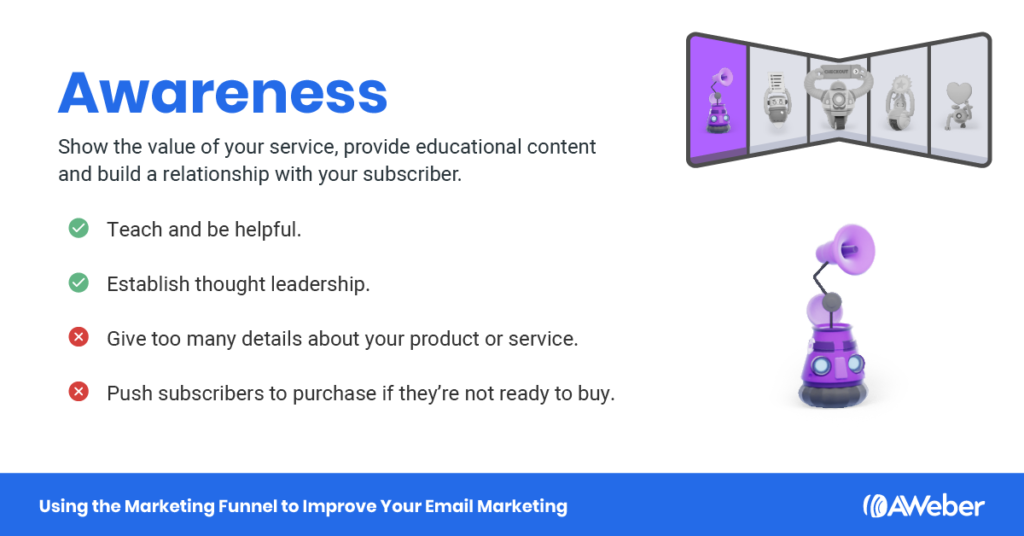
Awareness is the first of the marketing funnel stages. During this stage, prospects that are strangers to your brand and company learn who you are. This is your opportunity to start building a trusted relationship with your prospects.
It is your job during this stage of the marketing funnel to demonstrate your value to subscribers through free, educational content. They’re not ready to buy from you yet — because they don’t yet understand what you bring to the table.
Not sure what free content to send in your emails? Let’s say you’re a personal trainer who’s trying to acquire more customers with email. Here are some ideas for content you could include in an automated email series to your subscribers:
- Blog posts about nutrition or fitness
- A food tracking calendar worksheet
- An ebook that explains the health benefits of being fit
- A live 30-minute workout webinar
(Here are 22 Brilliant Lead Magnets That’ll Inspire You to Grow Your Email List Right Now.)
Fitness influencer Kayla Itsines builds a relationship with her subscribers, shows her expertise and demonstrates the value of her services by giving her subscribers a free week of her Bikini Body Guide workout program.
When subscribers sign up, they receive an ebook with a full week of workouts so they can test the program and see the value of it for themselves.
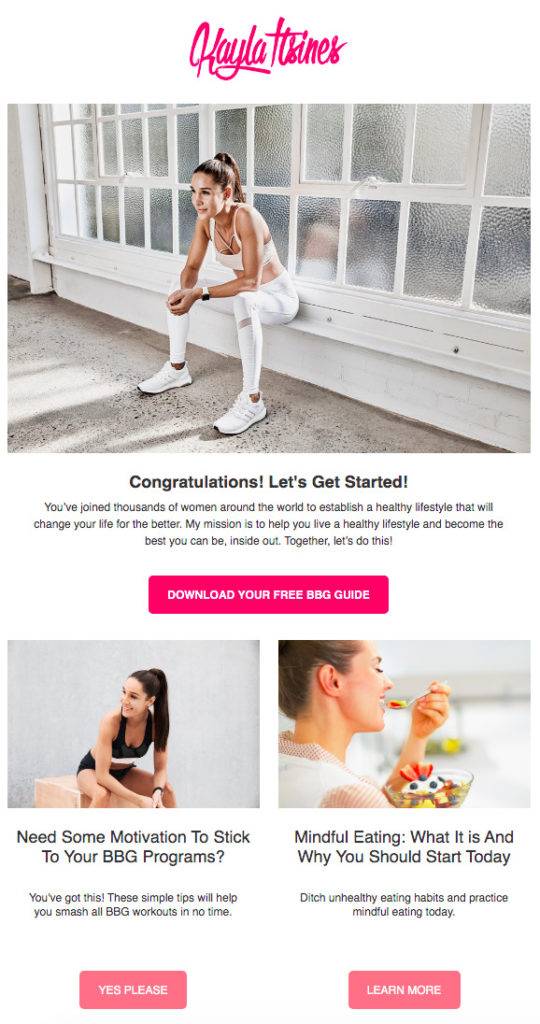
2. Consideration
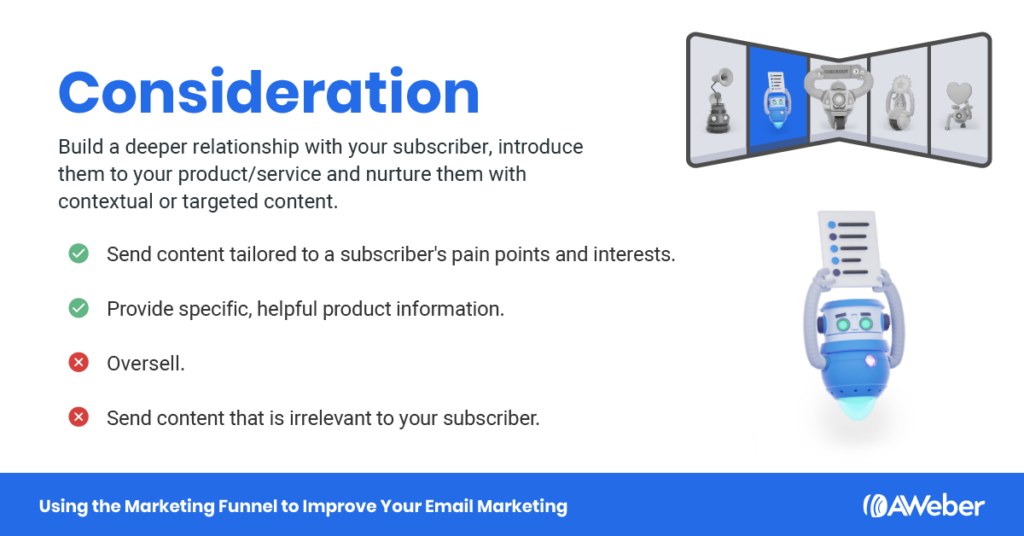
Once a subscriber moves past the awareness stage of the marketing funnel, they enter the consideration stage. In the consideration stage, a subscriber is willing to consider purchasing your services or products. They are interested in learning more about you and what you can offer them.
Since you know more about your subscriber in this marketing funnel stage than you did during the awareness stage, you can send them more targeted content that addresses their specific pain points. This helps build trust between your subscriber and your brand, because you’re showing them that you understand them.
So what kind of content should you send your subscribers during the consideration stage? Let’s say that you are an online nutrition coach trying to get more leads to consider purchasing your 8-week nutrition course. Here are a few examples of content you could include in your emails:
- A testimonial or case study showing how other customers got success with your course
- A live nutrition webinar
- Your free podcast episodes, where you talk about many of the principles you teach in your course
In this email, OptimizeMe includes a testimonial from a customer who saw great success after purchasing the masterclass. The testimonial is appropriate during the consideration stage, because it relates to subscribers’ interests (nutrition) and introduces subscribers to the product (8-Week Nutrition Essentials Masterclass) while showing the value of that product.
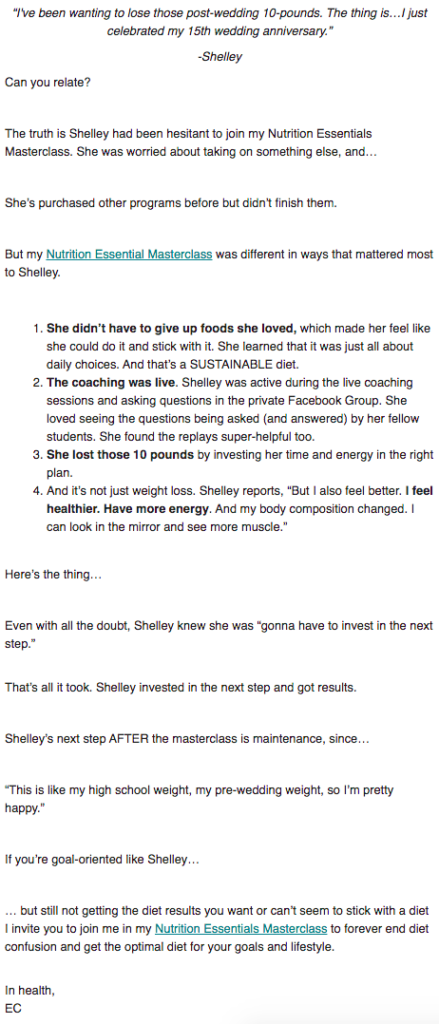
3. Conversion
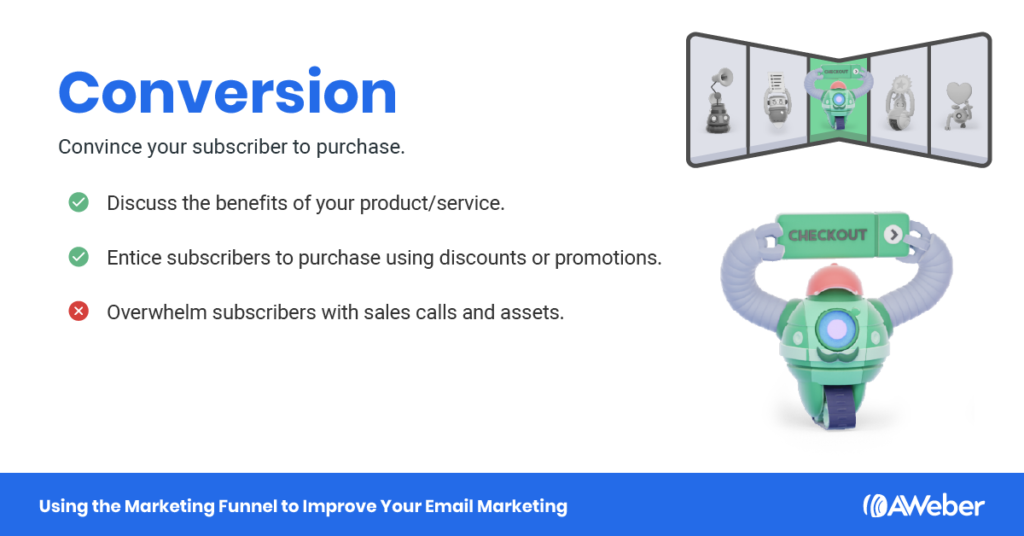
It has finally arrived: decision time. Once your subscriber knows the value of your product and you have educated them on the product itself through the use of social proof, webinars, blog posts, and other educational content, they are ready to decide whether or not to purchase.
Once you’ve reached this marketing funnel stage, you can start talking about why your product and service is better than your competitors’ and why it’s perfect for your prospect. Focus on the benefits of your product/service rather than just explaining features.
Here are a few tactics you can use to convince your subscribers to purchase:
- Invite subscribers to a sales webinar where you show them your product/service and tell them the benefits
- Create an automated email series that describe a different benefit of your product/service
- Offer a free trial or give away samples so that prospects can see the benefits for themselves
- Send subscribers an email that offers a sale or discount for purchasing within a certain timeframe
By offering discounts and deals via email, Freshly creates a sense of urgency for their subscribers. If subscribers are interested in purchasing but haven’t yet, this email convinces them that now is the perfect time to take action.

4. Loyalty
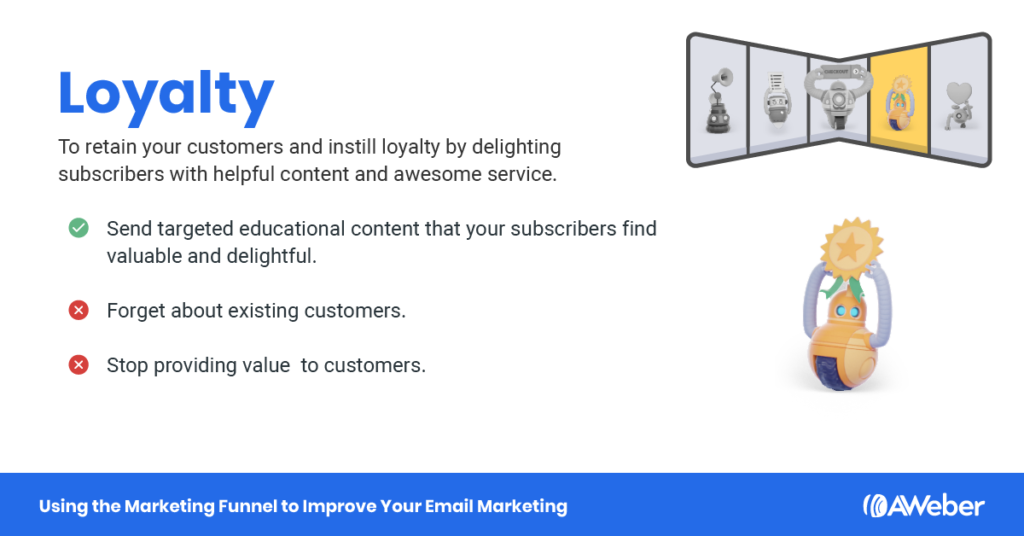
Once a prospect becomes a customer, you may be tempted to pat yourself on the back and move on to the next prospect. However, forgetting about your customers is a bad idea.
Unless you have a plan for developing customer loyalty, you’ll probably lose many of your customers, wasting a lot of your prior marketing efforts during the earlier marketing funnel stages.
Remember the Pareto Principle? Repeat customers are too valuable to ignore. So what kind of email content increases loyalty and retention?
Let’s say you have an online coffee store. You sell subscriptions to your coffee-of-the-month club, and you don’t want your coffee-of-the-month members to lose interest and cancel their subscription. Here are a few ideas for valuable content you could include in your emails to increase retention:
- A monthly live stream to YouTube that describes the coffee-of-the-month and gives coffee brewing best practices.
- A survey that asks customers how happy they are with the coffees they are receiving and what other kinds of coffee they’d like to get.
- Educational content about the history of coffee.
- A 20 percent discount to customers that purchase a yearly subscription of your coffee-of-the-month club.
To retain their customers and encourage loyalty, Canva sends educational emails to teach their customers how to use Canva.
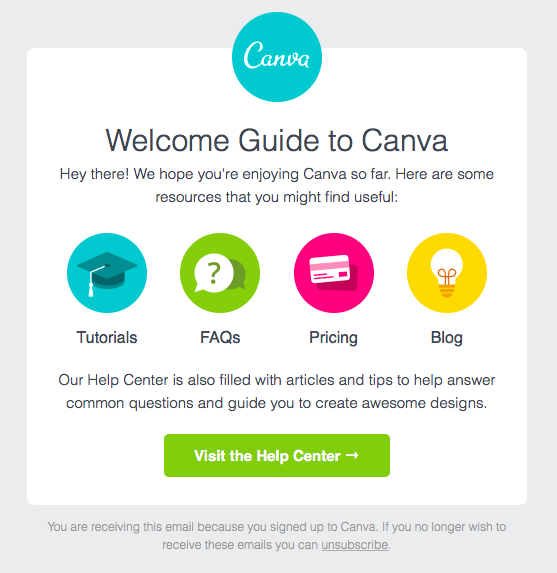
5. Advocacy
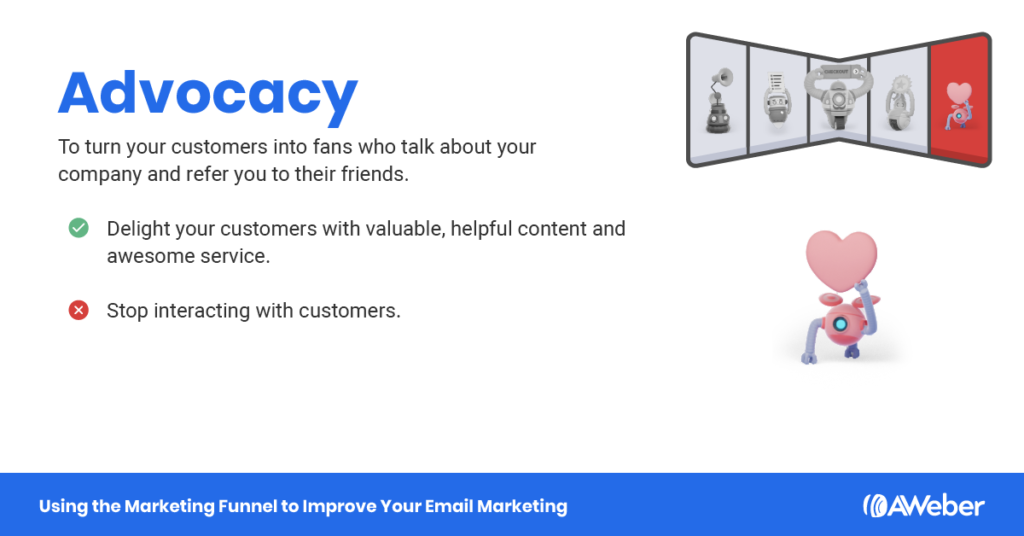
Advocacy happens when your customers become something more than customers: they become fans.
Bringing subscribers to this stage of the marketing funnel is extremely valuable. The most effective marketing is referral marketing. When your friend tells you a certain product is awesome, you are much more likely to purchase that product because you trust your friend.
What are some ways to use email to turn your customers into raving fans?
- Identify customers that love you and send them an email asking them to refer you to their friends
- Include a survey in an email to learn how you could improve your product or service
- Start an affiliate or loyalty program where customers get incentives for referring you
- Engage with your advocates by replying to their emails, posting on social media, offering incentives for writing reviews and participating in testimonials
You also want to collect feedback during this stage. The more you listen to your customers, the more you can learn and improve your content so it’s in line with their challenges, needs, and wants. Tools like SurveyMonkey and SurveyGizmo make collecting feedback easy.
Pro tip: Inside AWeber’s platform, you can find survey templates, too. All you have to do is add your own content into the templates and send it to your customers.
To make their subscribers feel special, Godiva offers discounts to their exclusive rewards members.
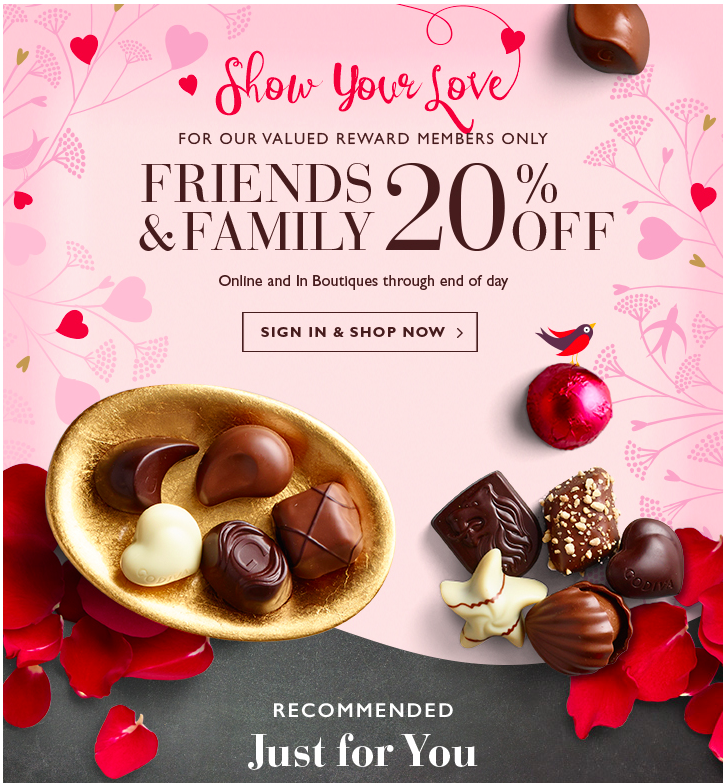
What Now?
Develop your email strategy with the marketing funnel in mind. Doing so, you’ll convert more prospects into customers and more customers into fans, which means more money for your business. Yay!
Start implementing these email marketing tips today with AWeber Free — our 100% free pricing option.
The post How to Build Marketing Funnels with Email appeared first on AWeber.
from AWeber https://ift.tt/1VAabGG



No comments:
Post a Comment